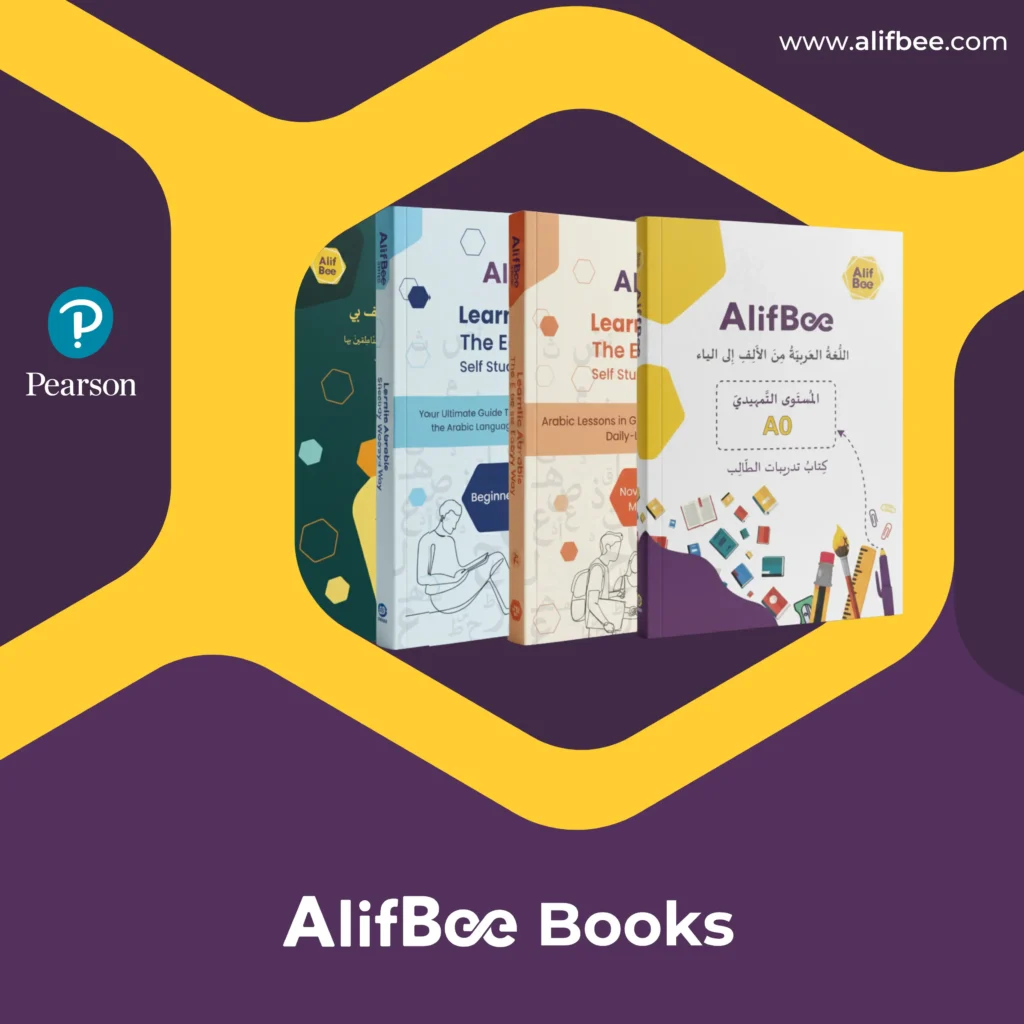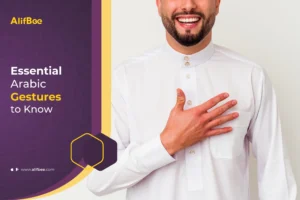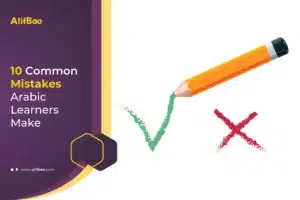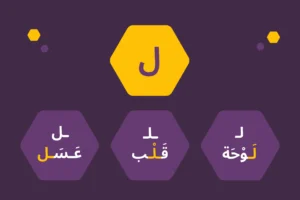Asking Questions in Arabic
We need to ask questions for nearly everything in our life. But asking questions can be difficult, especially in a new language.
That’s why, today, I will help you by teaching you how to ask questions in Arabic and show you how they are used in useful examples from our everyday life.
Are you ready? Let’s go!
May I?
Hal yumkinuny?
Hal yumkinu an?
هل يُمكِنُني؟ / هل يُمكِنُ أن؟
Examples
أمثلة
May I have a word with you?
هل يُمكِنُني التّحدّثُ مَعَكَ؟
May I ask for your advice on this project?
هل يُمكِنُني أن أَطلُبَ نَصيحَتكَ حَوَلَ هَذا المَشروعِ؟
May I borrow your car today?
هل يُمكِنُني أن أَستعيرَ سيّارتَك اليومَ؟
The Arabic question structure “هل يُمكِنُني؟” and “هل يُمكِنُ أن؟” translates to “May I?” or “Is it possible for me to?” in English. Let’s break down each part:
1. هل (hal)
- This word acts as a question marker that indicates the sentence is a yes-or-no question.
- It translates to “Is” or “Does” in English when used at the beginning of a question.
2. يُمكِنُ (yumkinu)
- This verb means “to be possible” or “to be able to” in Arabic.
- In the structure, it functions similarly to the English phrase “is it possible” or “may.”
3. ني (nī)
- This suffix is the first-person object pronoun meaning “me” or “myself”.
- When combined with “يُمكِنُ”, it creates the phrase “Can I” or “Is it possible for me”.
Alternative Structure: هل يُمكِنُ أن؟
- أن (an) is used to connect “هل يُمكِنُ” with another verb, creating a structure similar to “May I do something?” or “Is it possible that I…?”
- For example: “هل يُمكِنُ أن أذهب؟” meaning “May I go?” Here, “أن” links to “أذهب” (I go).
More Example Sentences
- هل يُمكِنُني الحصول على القلم؟
– “May I have the pen?” - هل يُمكِنُ أن أتكلم الآن؟
– “May I speak now?”
Can I … ?
Hal astaṭyʻu an ….?
هل أَستَطيعُ أن….؟
Examples
أمثلة
Can I leave work early today?
هَلْ أَسْتَطِيْعُ أَنْ أُغَادِرَ العَمَلَ اليَوْمَ بَاكِرًا؟
Can I work from home?
هل أستَطيعُ العَمَلَ مِنَ المَنزِلِ؟
Can you come to the restaurant today?
هل تَستَطيعُ أن تَأتي إِلى المَطعَمِ اليَومَ؟
The Arabic phrase “هل أستطيع أن” translates to “Can I” or “Am I able to” in English. Here’s a breakdown of the structure:
1. هل (hal)
- This word functions as a question marker in Arabic, indicating that the sentence is a yes-or-no question.
- It is similar to “Is” or “Does” at the beginning of English questions.
2. أستطيع (astatīʿ)
- This verb means “I can” or “I am able to”. It is derived from the root word “استطاع” which means “to be able to” or “to have the ability.”
- أستطيع is the first-person singular form, meaning “I can”.
3. أن (an)
- This particle connects أستطيع with another verb, similar to the English word “to” in expressions like “can I do something.”
- It introduces the verb that follows, specifying the action.
More Example Sentences
هل أستطيع أن أساعدك؟
– “Can I help you?”هل أستطيع أن أذهب الآن؟
– “Can I go now?”هل أستطيع أن أستخدم هاتفك؟
– “Can I use your phone?”
How can I … ?
Kyfa yumkinuny an …?
كيفَ يُمكِنُني أن … ؟
Examples
أمثلة
How can I make a cake?
كيف يُمكِنُني أن أَصنَعَ كَعكةً؟
How can I make money quickly?
كيف يُمكِنُني أن أَجنِيَ المال بِسُرعةٍ؟
How can I get a job?
كيف يُمكِنُني أن أحصَلَ على وَظيفةٍ؟
The Arabic question structure “كيفَ يُمكِنُني أن …؟” translates to “How can I…?” in English. Here’s a breakdown of the components in this question:
1. كيفَ (kayfa)
- This word means “how” and is used to ask about the manner or way in which something can be done.
- In this structure, كيفَ is asking “How” the action will take place or can be accomplished.
2. يُمكِنُني (yumkinunī)
- يُمكِنُ is derived from the verb “مَكَنَ” meaning “to be possible” or “to be able.”
- The structure يُمكِنُني combines يُمكِنُ (“is possible”) with the ني (nī) suffix, meaning “for me” or “I can.”
- Together, يُمكِنُني translates to “I can” or “It is possible for me.”
3. أن (an)
- This particle functions as a connector, similar to the English “to” in expressions like “How can I do something?”
- It introduces a specific action or verb that completes the phrase.
More Example Sentences
كيفَ يُمكِنُني أن أتعلم اللغة العربية؟
– “How can I learn Arabic?”كيفَ يُمكِنُني أن أساعدك؟
– “How can I help you?”كيفَ يُمكِنُني أن أستخدم هذا التطبيق؟
– “How can I use this app?”
Can you talk to me about?
Hal yumkinuka an tuḥaddthany ʻan …?
هل يُمكِنُكَ أن تُحَدّثَني عن… ؟
Examples
أمثلة
Can you talk to me about your country?
هل يُمكِنُكَ أن تُحدِّثَني عن بَلَدِكَ؟
Can you talk to me about your hobbies?
هل يُمكِنُكَ أن تُحدِّثَني عن هِواياتِكَ؟
Can you talk to me about your friends?
هل يُمكِنُكَ أن تُحدِّثَني عن أَصدِقائِكَ؟
The Arabic question structure “هل يُمكِنُكَ أن تُحَدّثَني عن…؟” translates to “Can you tell me about…?” in English. Here’s a breakdown of each part:
1. هل (hal)
- This is a question marker in Arabic, indicating that the sentence is a yes-or-no question.
- It is similar to using “Can” or “Do” at the beginning of an English question.
2. يُمكِنُكَ (yumkinuka)
- يُمكِنُ means “can” or “it is possible.”
- كَ (ka) is the second-person singular pronoun suffix meaning “you.”
- Together, يُمكِنُكَ translates to “Can you” or “Is it possible for you.”
3. أن (an)
- This particle functions as a connector, like “to” in English, linking يُمكِنُكَ with the following verb.
4. تُحَدّثَني (tuḥaddithnī)
- The verb تُحَدّث means “to tell” or “to speak.”
- تُحَدّثَني includes ني (nī), a suffix meaning “me,” so تُحَدّثَني translates to “tell me” or “speak to me.”
5. عن (ʿan)
- This preposition means “about” or “regarding” and introduces the topic or subject of the question.
More Example Sentences
هل يُمكِنُكَ أن تُحَدّثَني عن تجربتك؟
– “Can you tell me about your experience?”هل يُمكِنُكَ أن تُحَدّثَني عن الكتاب؟
– “Can you tell me about the book?”هل يُمكِنُكَ أن تُحَدّثَني عن خططك المستقبلية؟
– “Can you tell me about your future plans?”
Which … would you like to …?
Fī ayyi … tuḥbb an …?
في أيِّ … تُحبّ أن … ؟
Examples
أمثلة
Which restaurant would you like to eat at?
في أيِّ مَطعَمٍ تُحبُّ أن تَأكُلَ؟
Which country would you like to live in?
في أيِّ بَلَدٍ تُحبُّ أن تَسكُنَ؟
Which sector would you like to work in?
في أيِّ قِطاعٍ تُحبُّ أن تَعمَلَ؟
The Arabic question structure “في أيِّ … تُحبّ أن …؟” translates to “Which … would you like to …?” in English. Let’s break down its components:
1. في أيِّ (fī ayy)
- في (fī) means “in” or “at” and helps set up the context for the question. It’s often used in Arabic questions to introduce options or specify a category.
- أيِّ (ayy) means “which” and indicates a choice between different options.
- Together, في أيِّ sets the question to ask “In which…” or simply “Which…” depending on context.
2. تُحبّ (tuḥibbu)
- This verb means “you like” or “you would like” in the present tense.
- تُحبّ is the second-person singular form, which is used when addressing someone directly.
- In this question, تُحبّ implies “you would like” or “you prefer.”
3. أن (an)
- This particle introduces a verb, similar to the English “to” in phrases like “you’d like to do something.”
- It leads into the specific action or choice the question is asking about.
More Example Sentences
في أيِّ بلد تُحبّ أن تقضي عطلتك؟
– “Which country would you like to spend your vacation in?”في أيِّ وقت تُحبّ أن نلتقي؟
– “What time would you like us to meet?”في أيِّ مطعم تُحبّ أن نتناول العشاء؟
– “Which restaurant would you like us to have dinner at?”
What do you prefer to … ?
Mādhā tufaḍḍlu an …?
ماذا تُفَضّلُ أن … ؟
Examples
أمثلة
What do you prefer to do on holiday?
ماذا تُفَضِّلُ أن تَفعَلَ في العُطلةِ؟
What do you prefer to drink after dinner?
ماذا تُفَضِّلُ أن تَشربَ بَعدَ الغَداءِ؟
What do you prefer to do after work?
ماذا تُفَضِّلُ أن تَفعَلَ بَعدَ العَمَلِ؟
The Arabic question structure “ماذا تُفَضّلُ أن …؟” translates to “What do you prefer to …?” in English. Let’s break down each part:
1. ماذا (mādhā)
- This word means “what” and is used to ask about a preference, choice, or action.
- It sets up the question by asking “What…” to specify what the person prefers.
2. تُفَضّلُ (tufaḍḍilu)
- This verb means “you prefer.”
- تُفَضّلُ is the second-person singular form, directly addressing the listener.
- In this structure, it translates to “do you prefer.”
3. أن (an)
- This particle functions similarly to “to” in English, linking تُفَضّلُ with the following action or verb.
- It introduces what action or option the person is being asked about.
More Example Sentences
ماذا تُفَضّلُ أن تأكل؟
– “What do you prefer to eat?”ماذا تُفَضّلُ أن تفعل في وقت فراغك؟
– “What do you prefer to do in your free time?”ماذا تُفَضّلُ أن تدرس؟
– “What do you prefer to study?”
Do you have a … ?
Hal ladyka / Hal ʻindka …?
هل لَديكَ / هل عِندكَ … ؟
Examples
أمثلة
Do you have an objection?
هل لَديكَ اعتِراضٌ؟
Do you have a job?
هل لَديكَ عَمَلٌ؟
Do you have a car?
هل عِندَكَ سَيّارةٌ؟
The Arabic question structure “هل لَديكَ…؟” or “هل عِندكَ…؟” translates to “Do you have…?” in English. Both phrases are used to ask if someone possesses or has access to something, but there are subtle differences in usage:
1. هل (hal)
- This word acts as a question marker and indicates that the sentence is a yes-or-no question.
- It is similar to “Do” or “Is” at the beginning of English questions.
2. لَديكَ (ladayka) vs. عِندكَ (ʿindaka)
- لَديكَ: This form translates to “do you have” in the sense of “having something in your possession or ownership.” It is used when referring to something that is physically or practically with the person.
- عِندكَ: This also translates to “do you have” but with a slightly broader meaning of “being near you, accessible to you, or associated with you.” It may not necessarily indicate physical possession.
Both structures are commonly used and can often be interchangeable depending on the context.
More Example Sentences
هل لَديكَ قلم؟
– “Do you have a pen?” (implying possession of a pen)هل عِندكَ وقت؟
– “Do you have time?” (implying availability or access to time)هل لَديكَ سيارة؟
– “Do you have a car?” (suggesting ownership or regular access)هل عِندكَ كتاب؟
– “Do you have a book?” (could imply either possession or access to a book)
Final word
There are countless ways to ask questions in Arabic, but these expressions can be used in a variety of everyday conversations. You can easily personalize them by adding different nouns or verbs to create even more useful questions.
Make sure to practice these questions regularly until they become second nature.
Don’t forget to download our app to put your Arabic skills to the test with tons of fun and interactive exercises.
Check out other blogs with lots of useful everyday expressions.
Keep learning, and I’ll see you soon!








